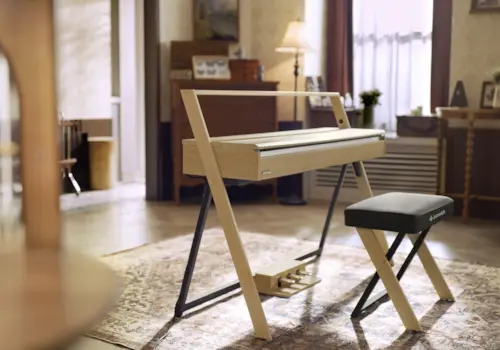07 February 2018
|
Read our tips on learning how to play romantic piano music in time for Valentine's Day.
1. Firstly, it’s all about the melody. Get to know the melody in your head first, and even sing it out loud. That’s before you touch the piano! By doing so, you will really understand the phrasing and the shape of the lines.
When playing the melody, even if the dynamic might be pianissimo (pp), it always needs to be heard. So remember to dig the fingers deep into the keys for a beautifully rounded tone.
When the opening melody of a piece returns, try to make it a little ‘different’ – whether by altering the dynamics or by changing your touch. Usually, the return of the melody is a very poignant moment of the piece.
2. Then there’s the accompaniment. It’s as equally important as the melody because it is the foundation over which the melody can shine and soar. Always remember to keep the accompaniment (usually in the LH) at a steady pulse. No matter how much rhythmic liberty you wish to bring to the melody, the LH accompaniment should remain stable.
3. Seek out those inner voices. In Romantic repertoire, such as Schumann and Rachmaninov, there are moments where melodic lines appear in the middle register (that area on the piano between both hands). This means nimble use of the thumbs. Inner melodies require a lot of work. Balance/voicing of all the notes is crucial so that we can hear the inner melodies. Turn to Mark Tanner’s article on this very subject inside Pianist issue 100.
4. Romantic piano music often requires a dose of rubato. But don’t overdo it! If you use some rubato in a certain bar, chances are that you need to get back on track to the normal tempo by the next. Slow practising really helps because you can listen carefully and judge the rubato – defining where you start to slow down and accelerate again.
5. Pedalling is important. Romantic melodies need to sound seamless, and sometimes finger pedalling alone won’t do the trick – meaning that a good dose of pedal is required. Use your ears at all times. You need to find the right amount of pedalling. Too little, and it will sound dry. Too much, and it will sound too mushy! But the norm would be what we call ‘legato pedalling’, which means changing the pedal quickly between harmonies to ensure a good legato sound.
FIVE ROMANTIC PIECES TO LEARN
Try your hand at these five scores that have appeared inside recent issues of Pianist:
1. Chopin: Prélude Op 28 No 15, ‘Raindrop’
Issue 100, intermediate-advanced level
2. Rachmaninov: Prelude in D major Op 23 No 4
Issue 99, advanced, with a lesson by Lucy Parham
3. Massenet: Méditation from Thais
4. Hofmann: Am Abend Op 88 No 2
Issue 97, intermediate, with a lesson by Janet Newman
5. Tchaikovsky: Chanson Triste Op 40 No 2
Issue 96, intermediate, with a lesson by Janet Newman
In the next issue…
Inside issue 101, we feature Liszt’s gorgeous Sancta Dorothea. Watch concert pianist and Pianist contributor Lucy Parham perform it below:
For some weekend music to get you feeling all romantic, listen to our NEW Spotify playlist, Romantic Classics.







